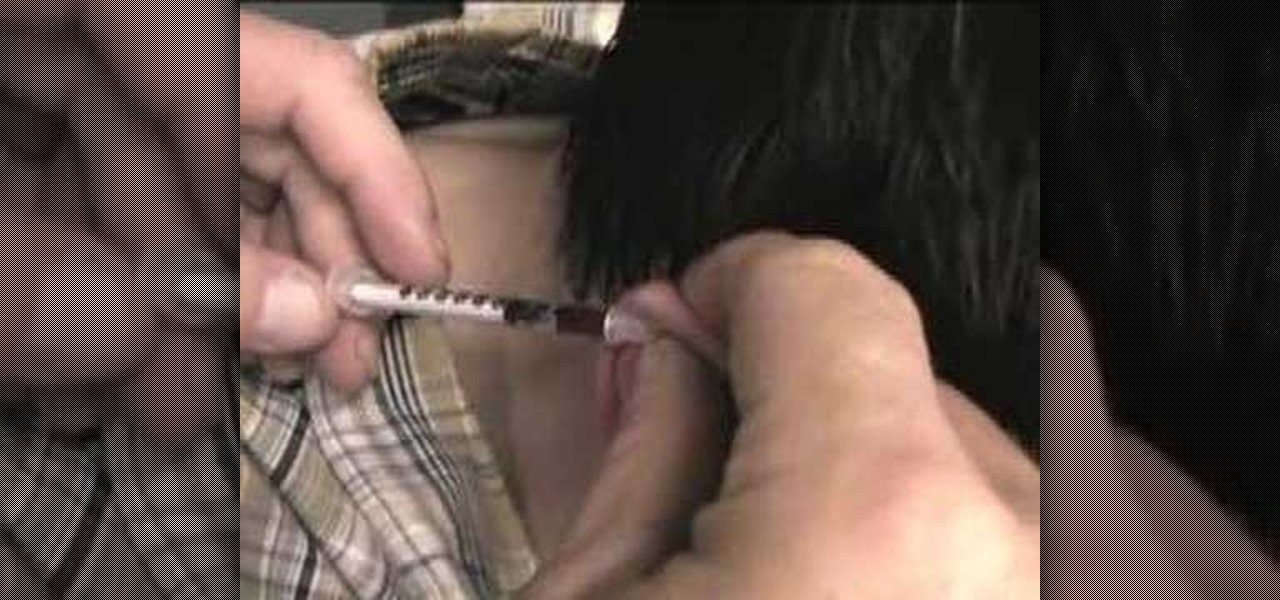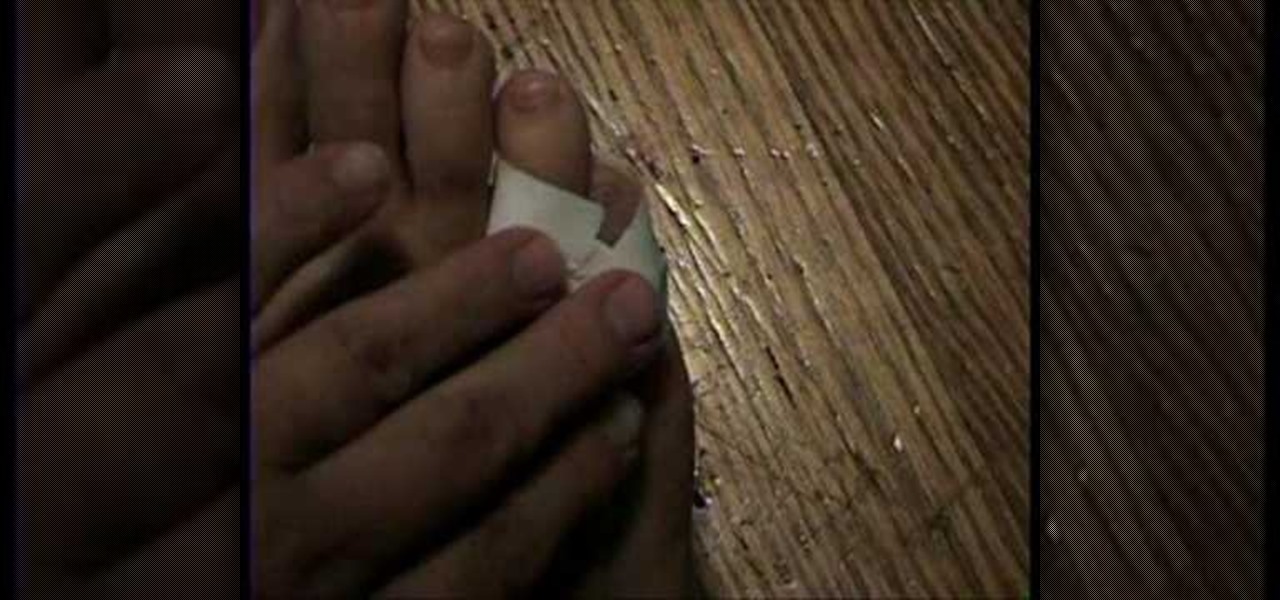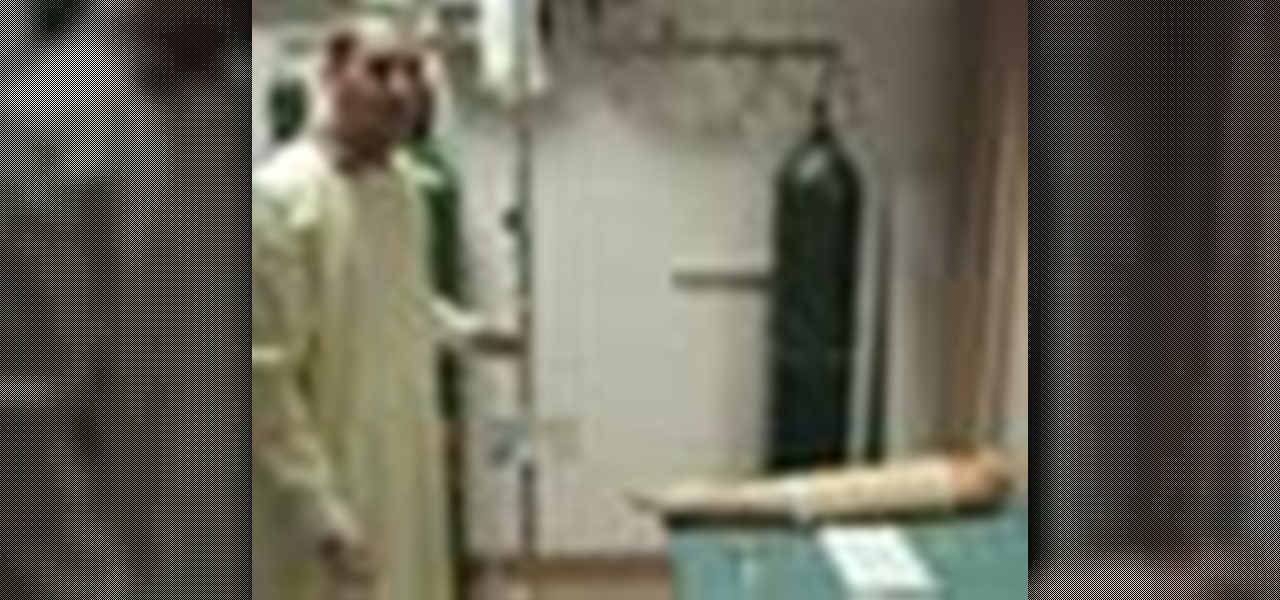Active First Aid Posts

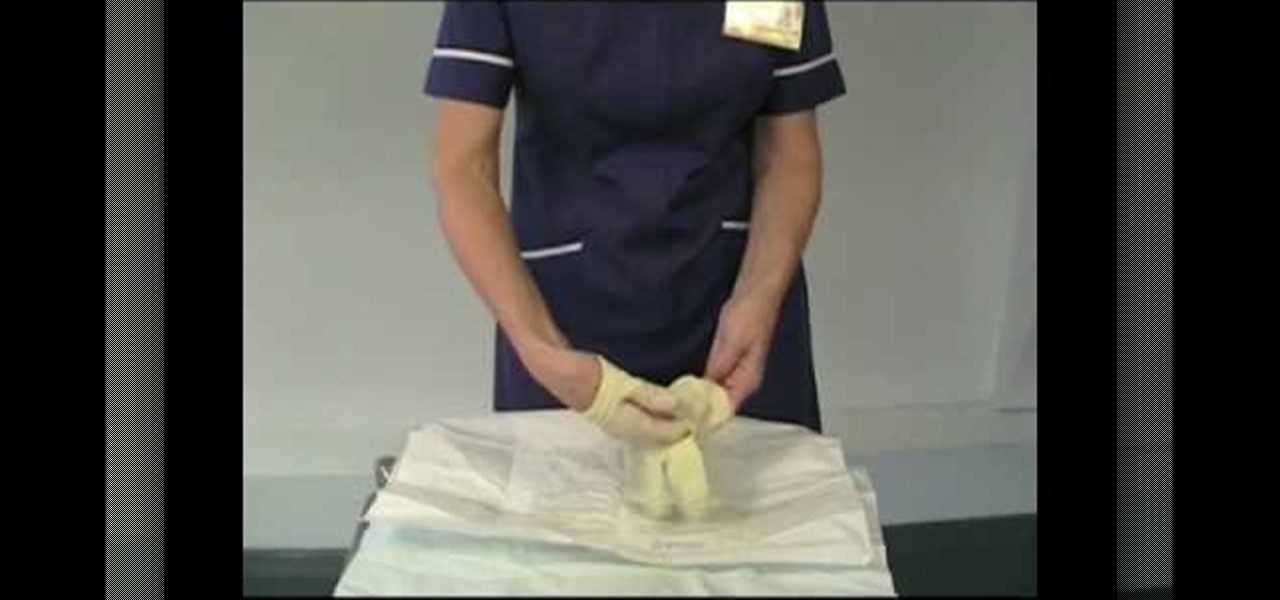
How To: Put sterile gloves on properly
Disposable, sterile gloves are one of the most important part of hospital safety, making sure that the hands that touch the patients are not going to make them sicker. However, putting on sterile gloves incorrectly can cause the germs from your hands to get on the gloves, ruining their sterility. This quick video details how to put sterile gloves on properly to maximize patient safety.
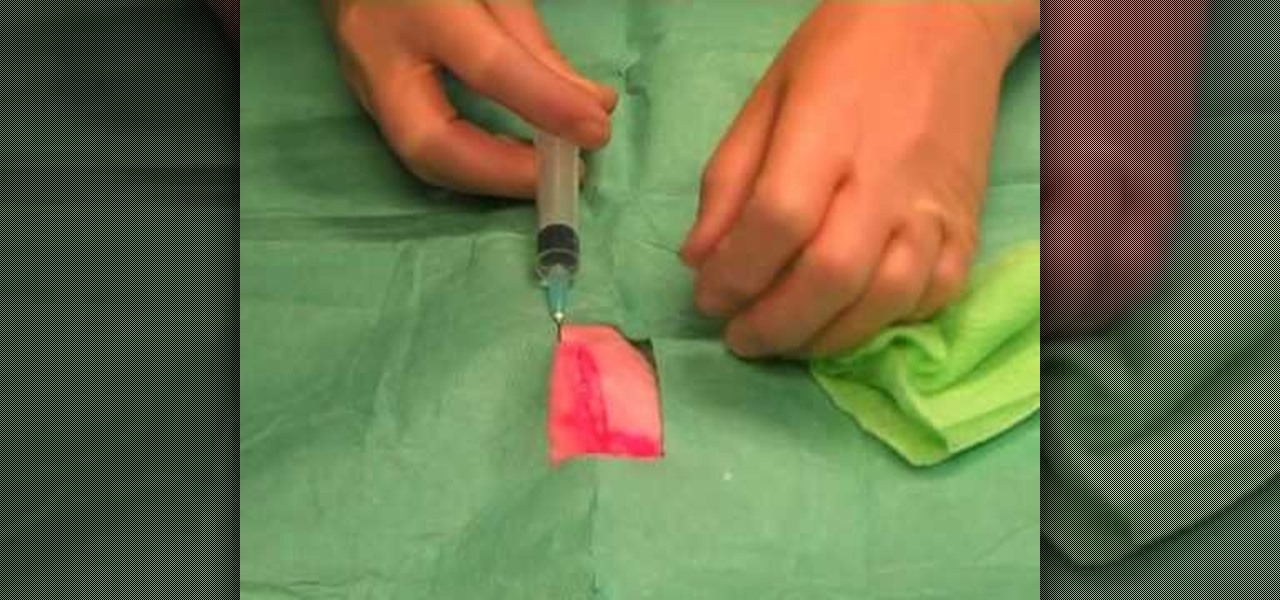
How To: Suture a wound in a hospital setting
Suturing wounds is one of the most important parts of any doctor's job, and learning how to do so should be among the first priorities of any medical student. This three-part video covers all of the basics of suturing a wound in a hospital setting. It features information on infiltrating anesthetic, choosing how many sutures to use, and other techniques.
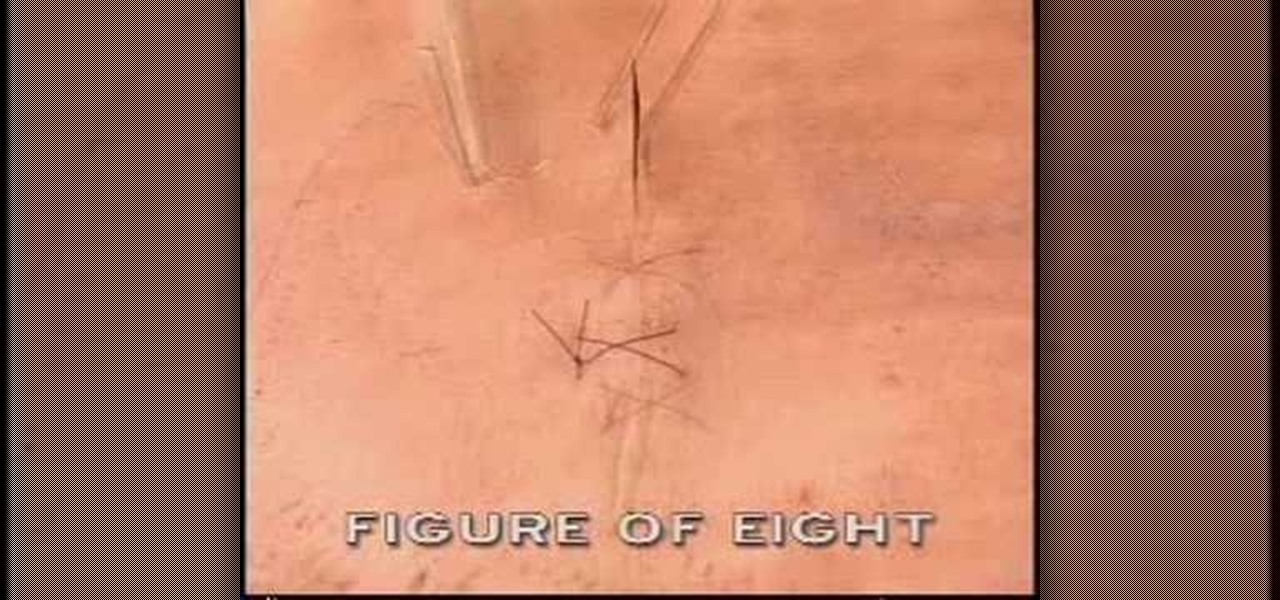
How To: Perform a figure 8 suture during surgery
There are a lot of different types of sutures out there, as any of your doctors, nurses, and medical students know, and performing them properly is a vital part of your job. This video details how to perform a figure of eight suture on a surgical patient. It is definitely made for the professional or student, so please, do not try this at home!
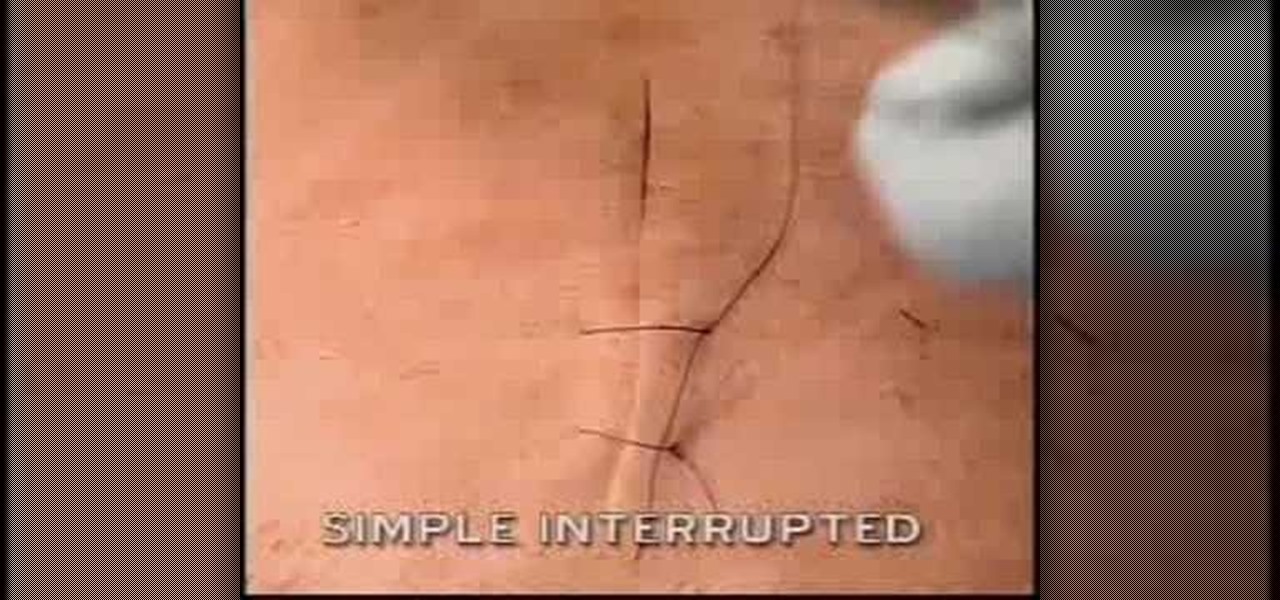
How To: Use the simple interrupted suturing technique
In the wide world of suturing techniques, the simple interrupted suture is perhaps the simplest and most common. This video details and demonstrates how to perform such a suture. This will be a very handy video for anyone new to the field of medicine looking to improve their surgical skills.
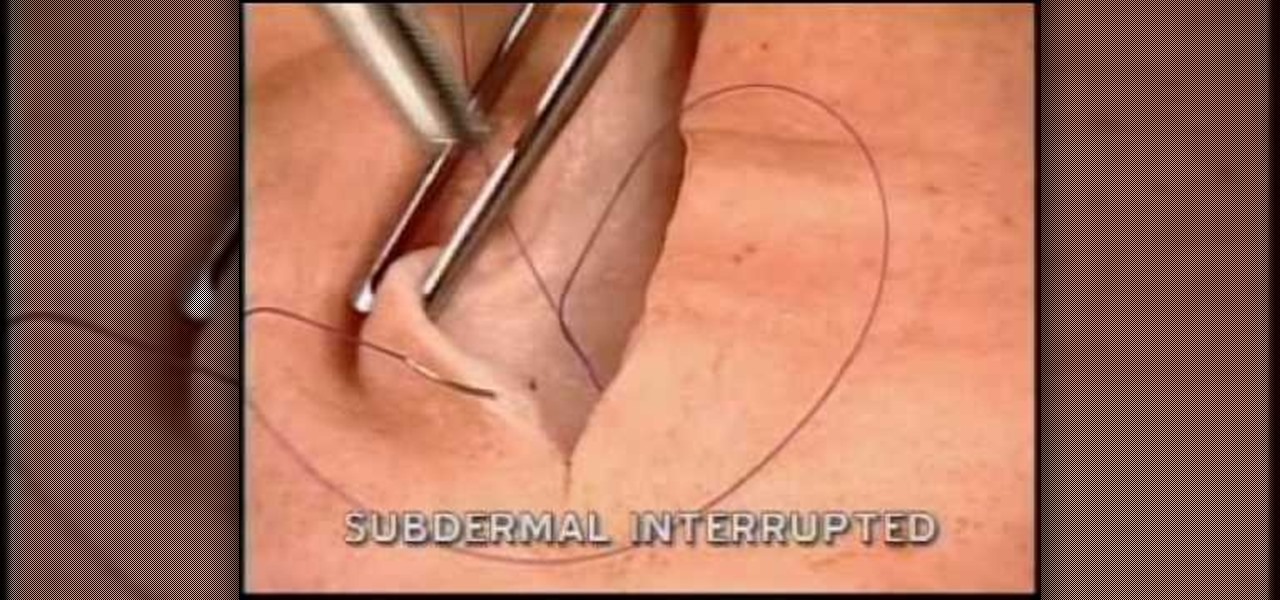
How To: Use subdermal interrupted suturing on a patient
The subdermal interrupted suture is a complicated, difficult type of suturing. It does have advantages, however, as the resulting suture is both strong and cosmetically pleasing. This video walks you through performing the stitch, and should make it easier to use this effective suturing procedure on your patients.
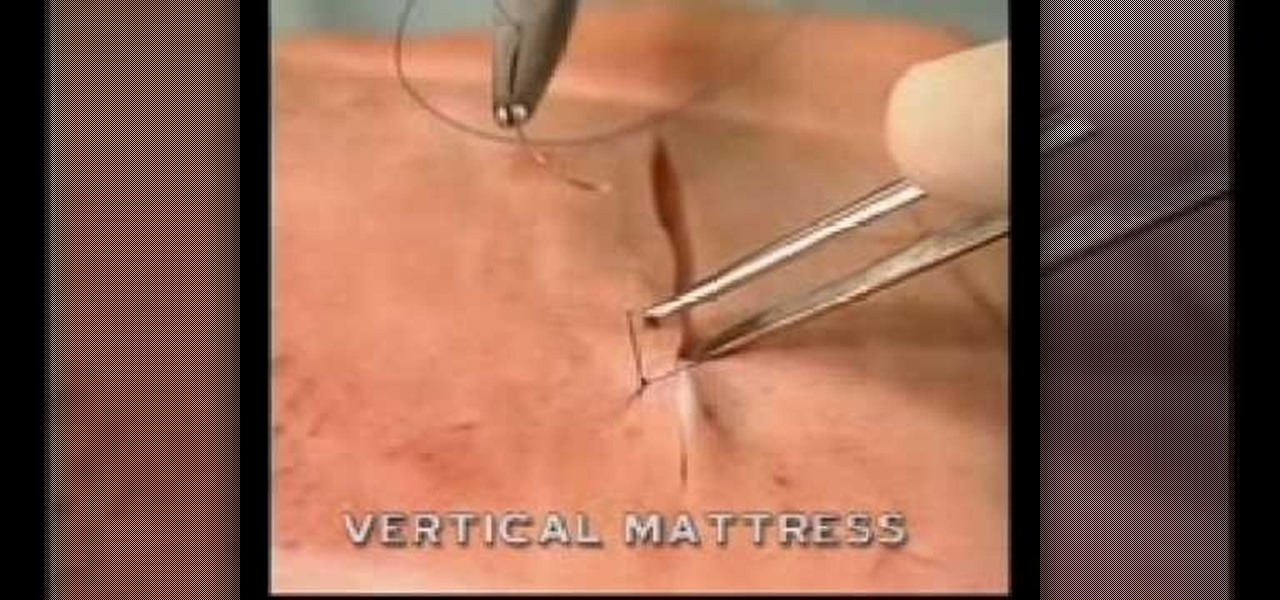
How To: Perform a vertical mattress suture during surgery
There are almost as many types of sutures as there are types of wounds that a human can sustain. This video instructs the viewer in performing one popular type of suture: the vertical mattress stitch. This type of stitch is relatively simple and strong, and thus a good choice for many types of wounds.
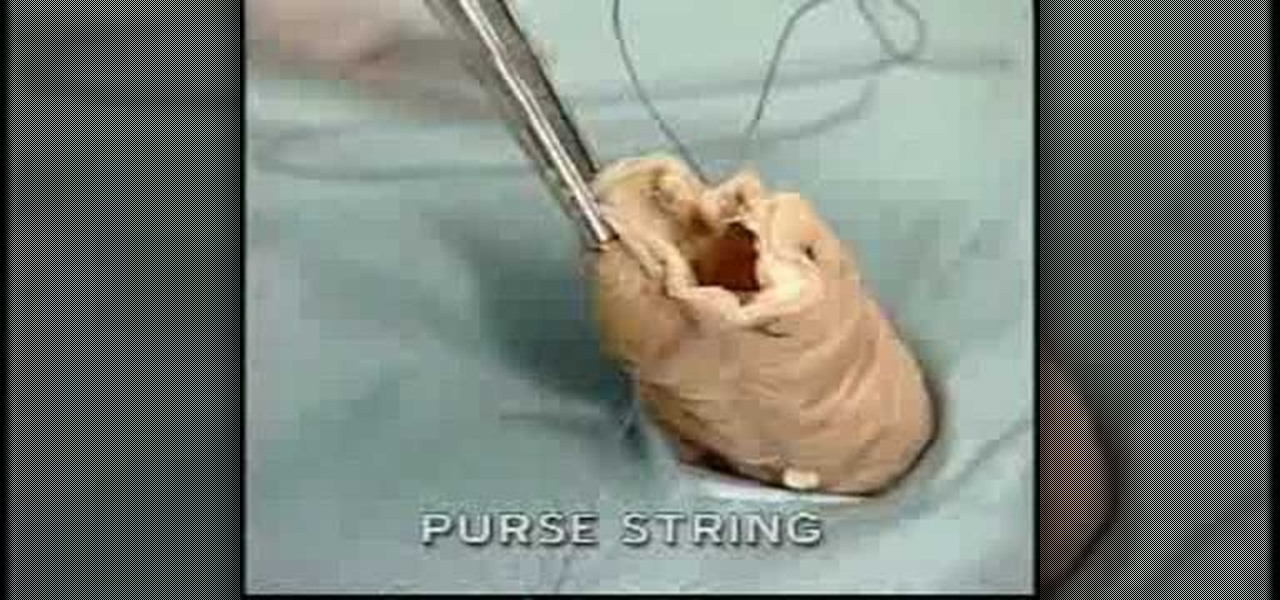
How To: Use a purse string suture during surgery
The purse string stitch is one of the more specialized stitches used during surgery: the purse string suture. This suture is used to seal an opening in a hollow organ in the body, like when a feeding tube is being inserted. It is a challenging maneuver, and mostly useful in internal medicine rather than external, but knowing it is essential to several types of surgery.
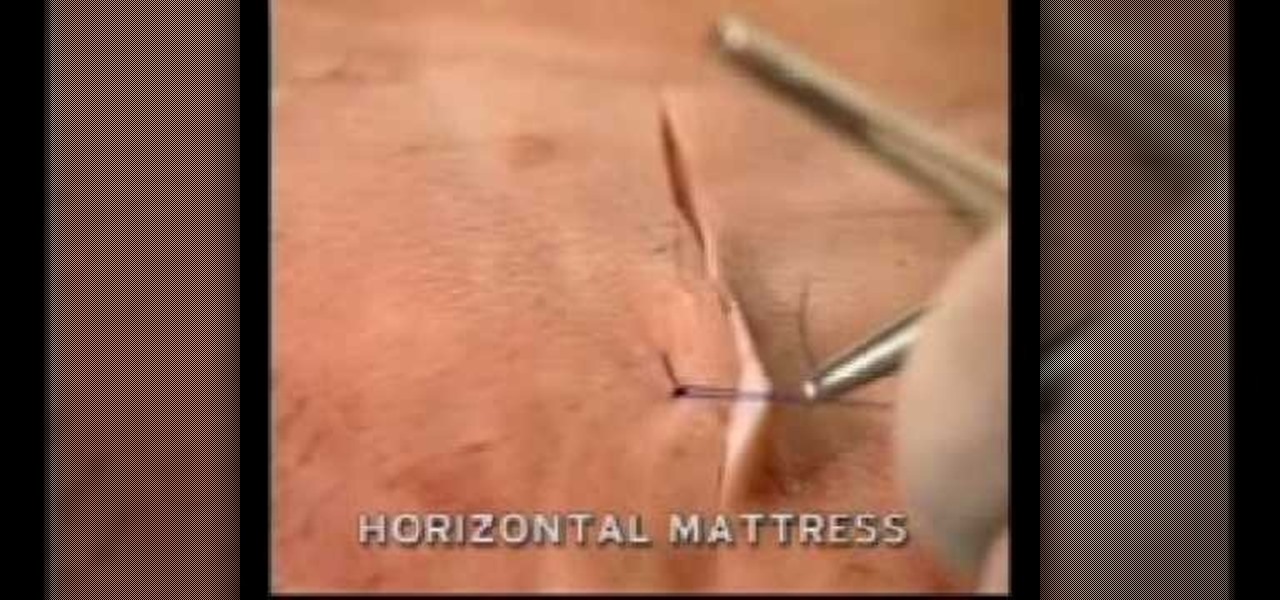
How To: Use a horizontal mattress suture on a wound
This video for surgeons contains step-by-step instructions for how to and a demonstration of using a horizontal mattress suture on a human patient. The horizontal mattress stitch is used to seal wounds without putting pressure on them, which allows them to heal faster.
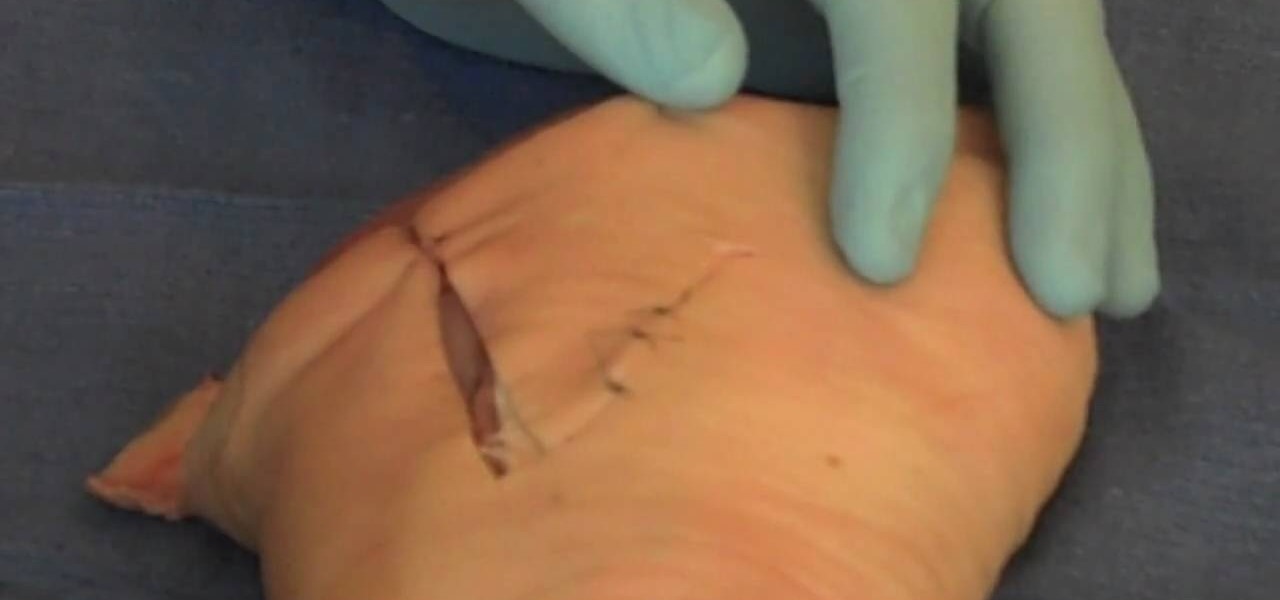
How To: Suture the dog ear of a wound closed
When a wound is particularly messy or has been sutured improperly, a dog ear can form. A dog ear is a flap of skin that does not fit cleanly into the suturing of the rest of the wound. This video features a doctor explaining how to suture a dog ear properly. One handy tip: if you lengthen the laceration away from the dog ear, the skin will hang looser and be easier to suture. Counterintuitive, but effective.
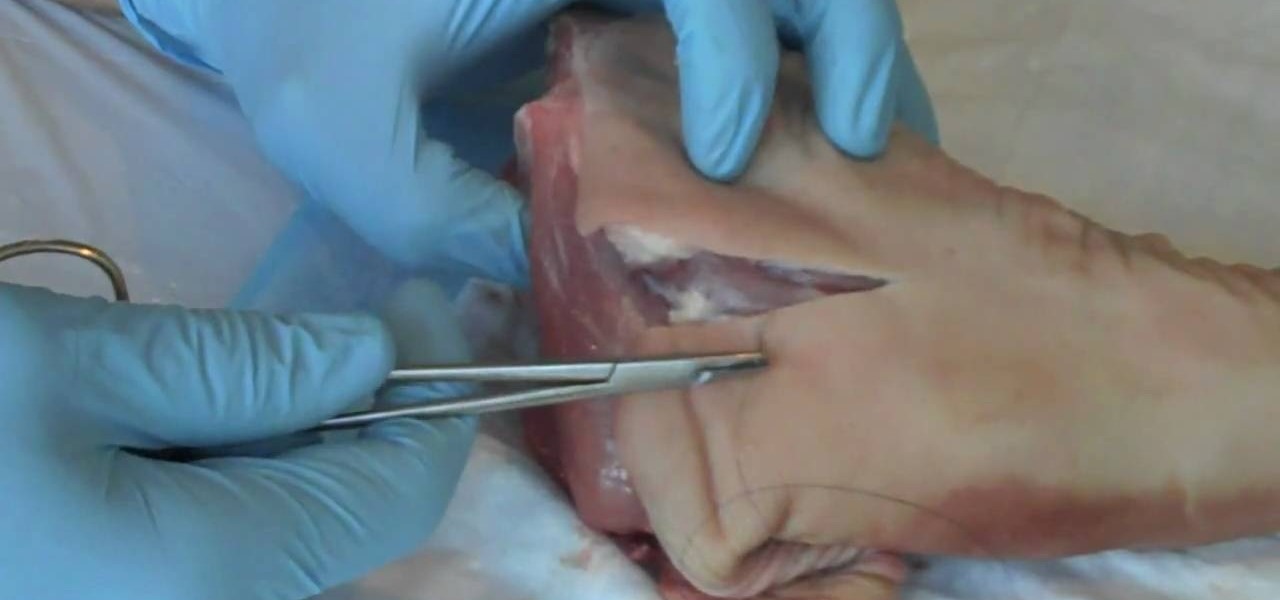
How To: Use proper suture technique with your patient
Performing sutures properly is one of the most important and basic parts of being a successful doctor, especially in a hospital environment. This two-part video features an overview of proper suture technique, from how to hold the needle to some common sense advice for avoiding mistakes.
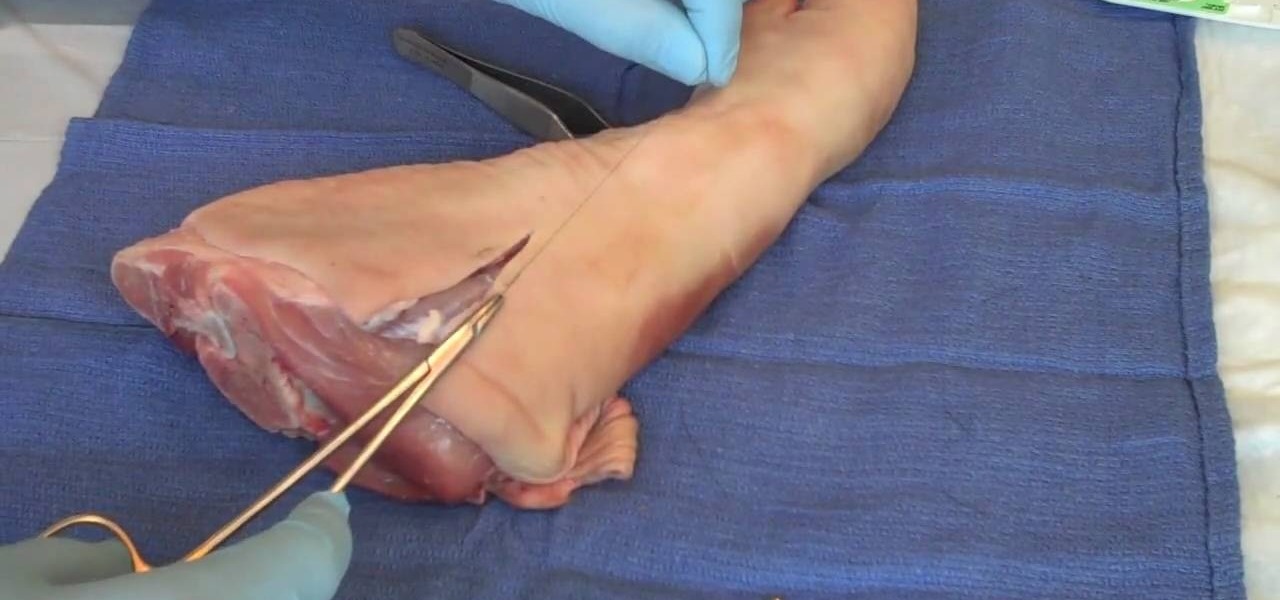
How To: Perform a horizontal mattress suture on a patient
The horizontal mattress suture allows the doctor or nurse performing them to minimize the tension being applied to a patient's wound by the stitch, which facilitates healing. This video features a doctor demonstrating how to perform such a suture on a pig's leg, teaching you one of the techniques that will help make you a more successful medical professional.
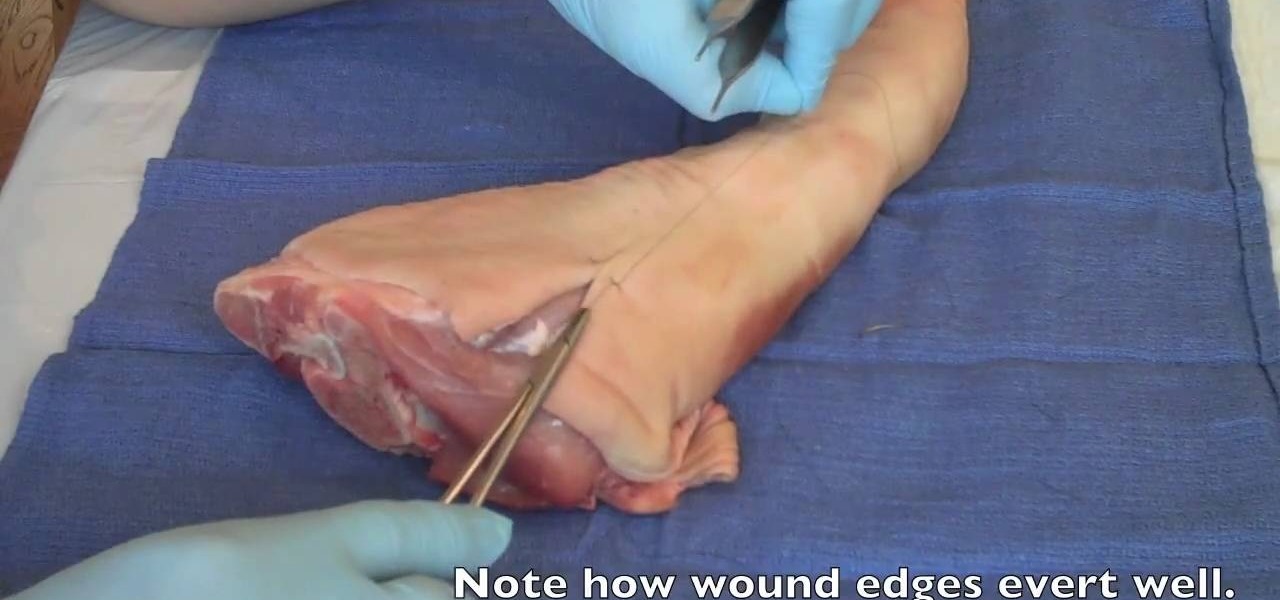
How To: Perform a vertical mattress suture on a patient
The vertical mattress suture is one of the most common stitches used in Western medicine. this video features a demonstration of a vertical mattress suture on a big legs. This video will make a handy reference for any medical, veterinary, or nursing student looking to improve their suturing techniques.

How To: Increase your burn awareness and treat burns properly
Did you know that over a million people a year suffer from the effect of burns and over 1/3 of them wind up in the emergency room? If you have a burn of any kind, check out this clip. Dr. Savant will teach you exactly how to deal with burns of all degrees, from slight surface burns to deeper, higher degree singes. So, check out this clip and prepare, just in case!

How To: Perform fundoscopy or opthalmoscopy on a patient
The opthalmoscope is one of most basic tools of the modern opthamologist, and is essential to the diagnosis of the eyes. This five-part video, performed by a medical student, will walk you through the necessary steps in performing fundoscopy or opthamalscopy on a patient, covering talking to the patient, an overview of the equipment, and all of the rest of the information that you will need.
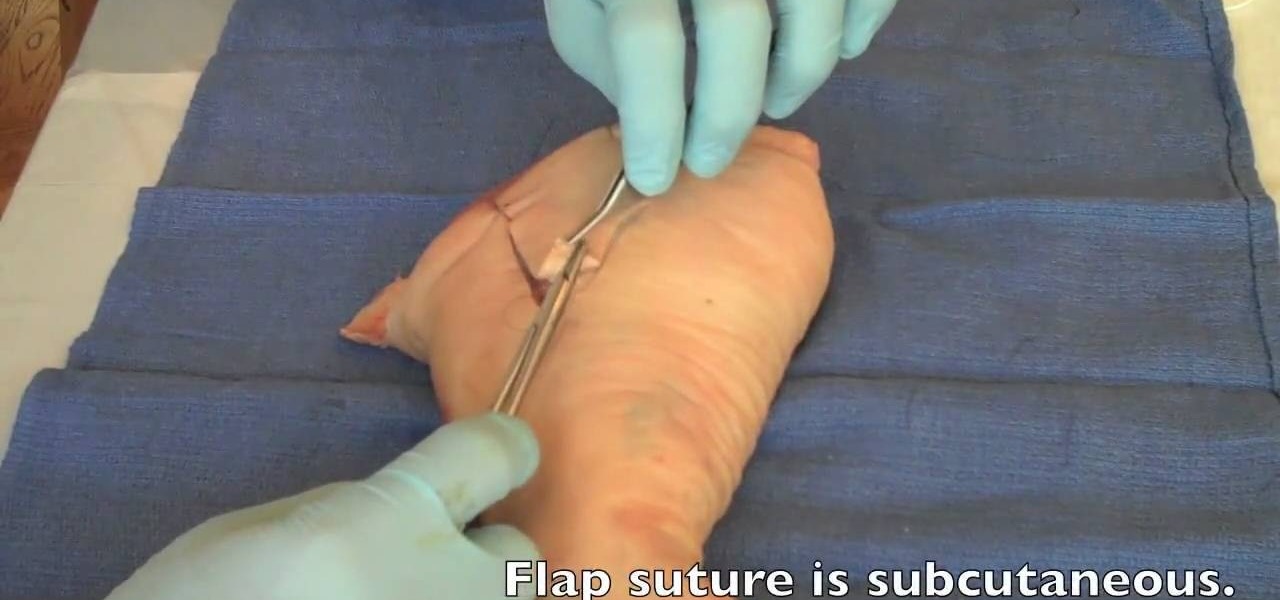
How To: Suture a wound with a skin flap closed
Many lacerations feature skin flaps dangling from the wound, begging to be reattached. It is very challenging to suture such a wound and reattach the skin without causing it to bunch up or hang too loosely. This medical demonstration video features a doctor explaining how to do just that, performing a flap suture quickly and efficiently.
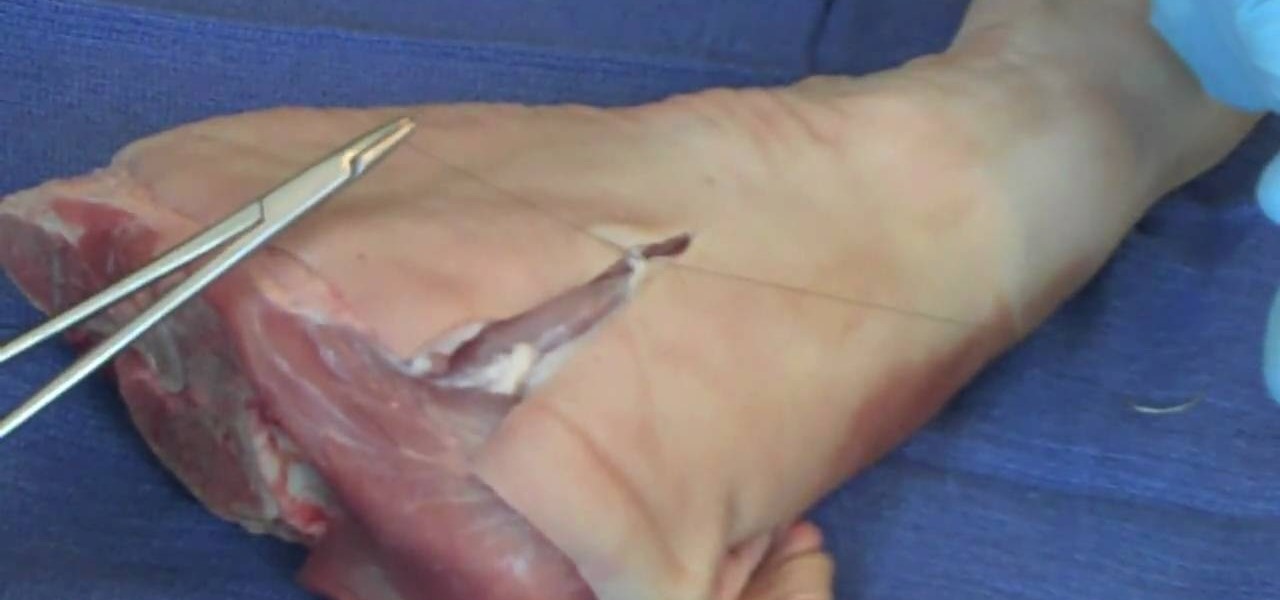
How To: Perform a subcutaneous suture on a patient
Just as there are many different ways to cut your skin, there are many ways to suture it back together again. This medical demonstrating videos features the subcutaneous stitch, one popular type of suture used by doctors and surgeons everywhere, especially on deep wounds.
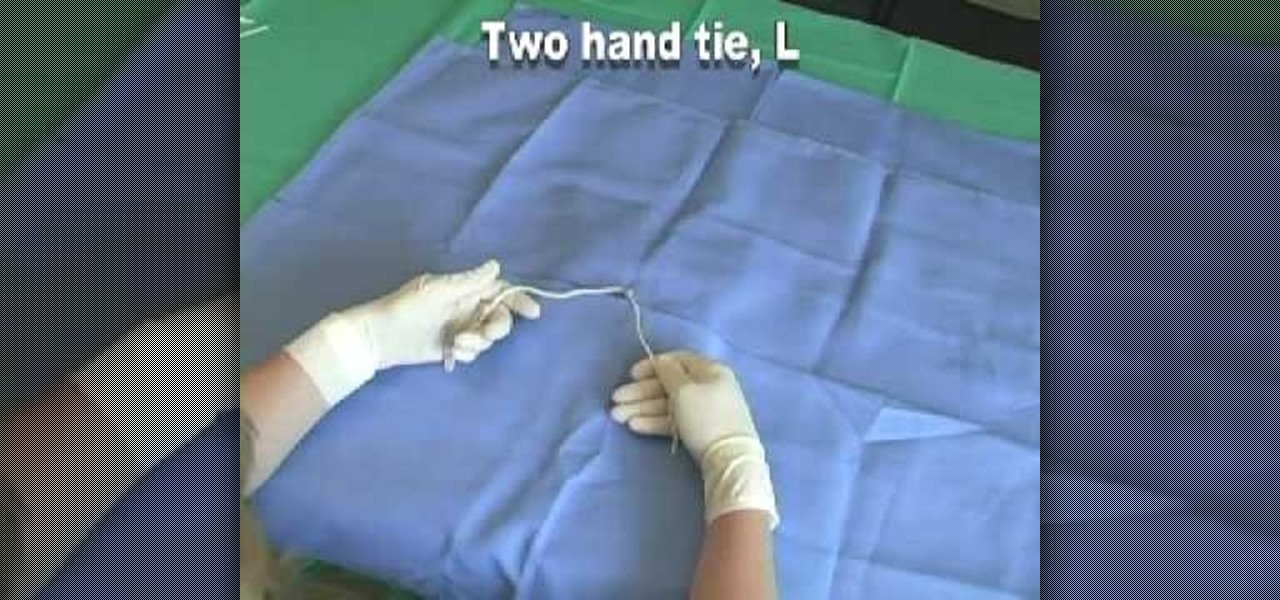
How To: Perform left handed two hand suture ties on an animal
If you are a veterinary student and need to learn how to do hand ties, these videos will help you. These educational videos were created by Lara Rasmussen, DVM and Eva Jaeger, RVT in 2003 and in this clip learn how to perform left handed two hand suture ties on most animals. Practice makes perfect and soon you will be ready to save the day.
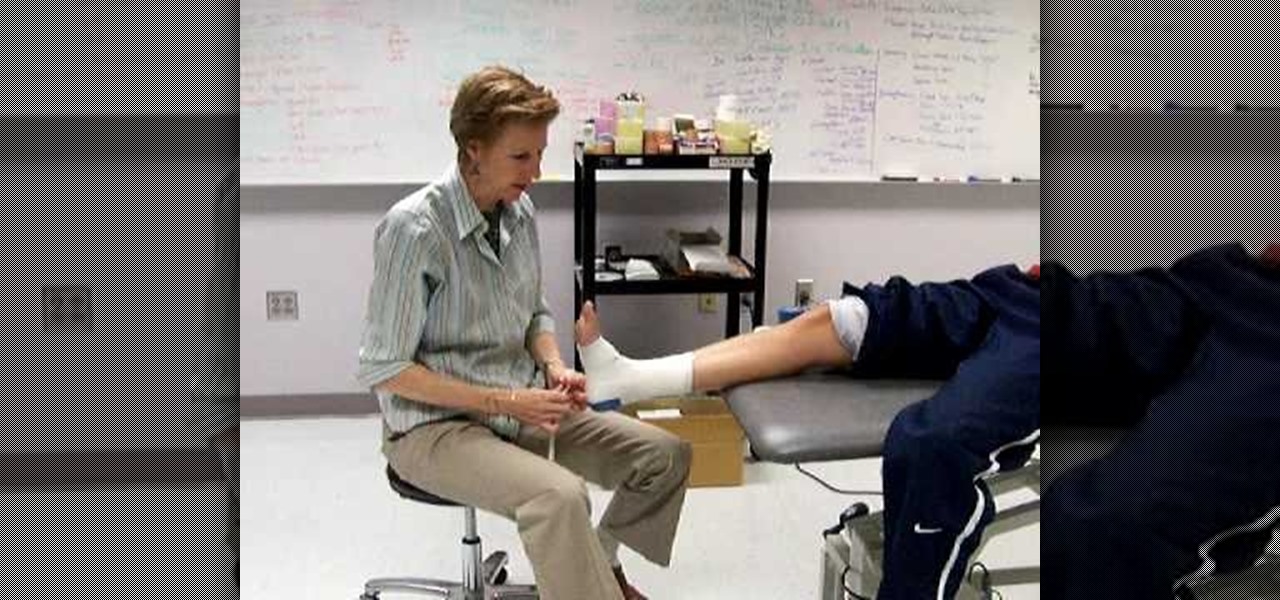
How To: Tape an ankle quick and easily
Athletes and accident-prone people, this video may save your life! Brush up on your first aid skills with help from this free tutorial. Learn how to tape an injured ankle quickly and easily with these step-by-step instructions.
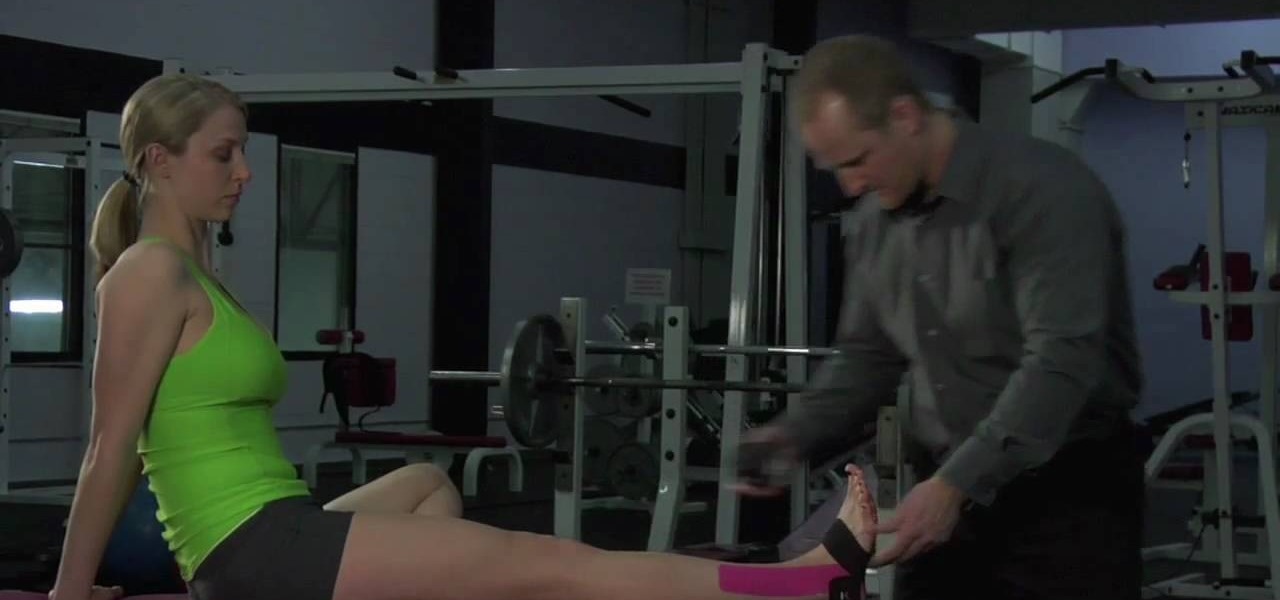
How To: Easily tape an ankle sprain
Runners, gymnasts, and others who are prone to injury: Listen up! In this video, learn how to properly tape up an ankle spran in case of injury. Brush up on your first aid skills with help from this free tutorial.
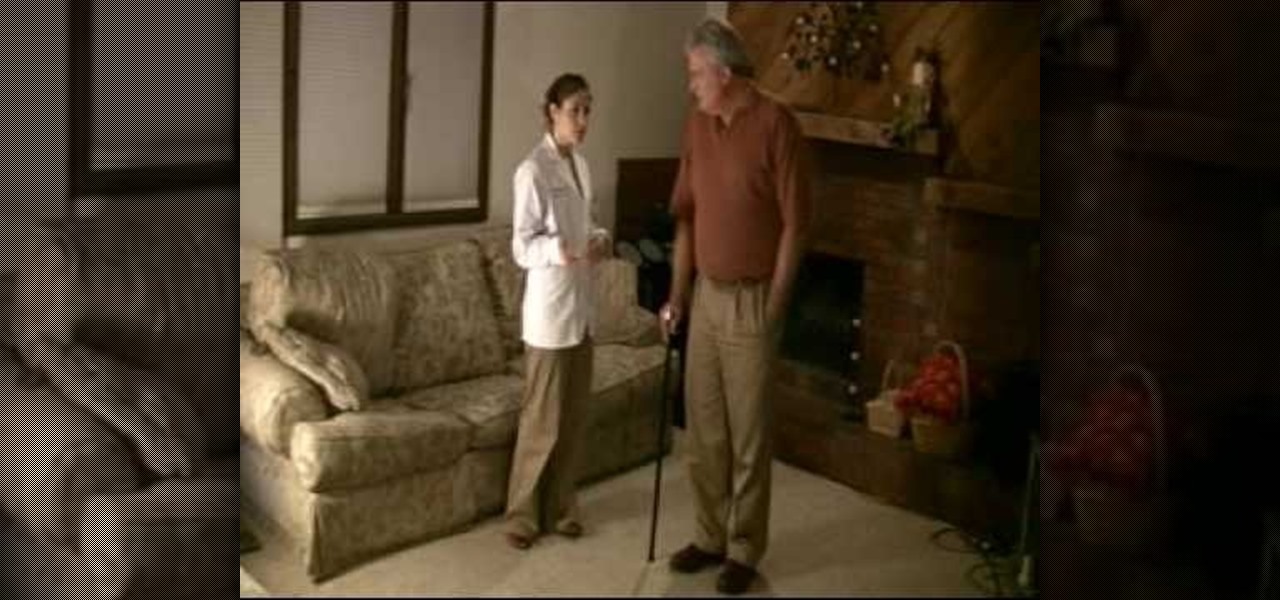
How To: Use a cane
Lauren Dickerson and Ed Barnett demonstrates how to properly use a cane. Using a cane is appropriate when you have impaired mobility of any kind such as an injury caused by a knee or a hip. First, measure the cane. Hold the cane about four inches away from you and it should come to hip height. When the cane is the right length, your arm should come at a 30 degree angle. Hold the cane on the stronger side of your body. When you walk, bring the cane and your weaker leg out together. Then bring ...
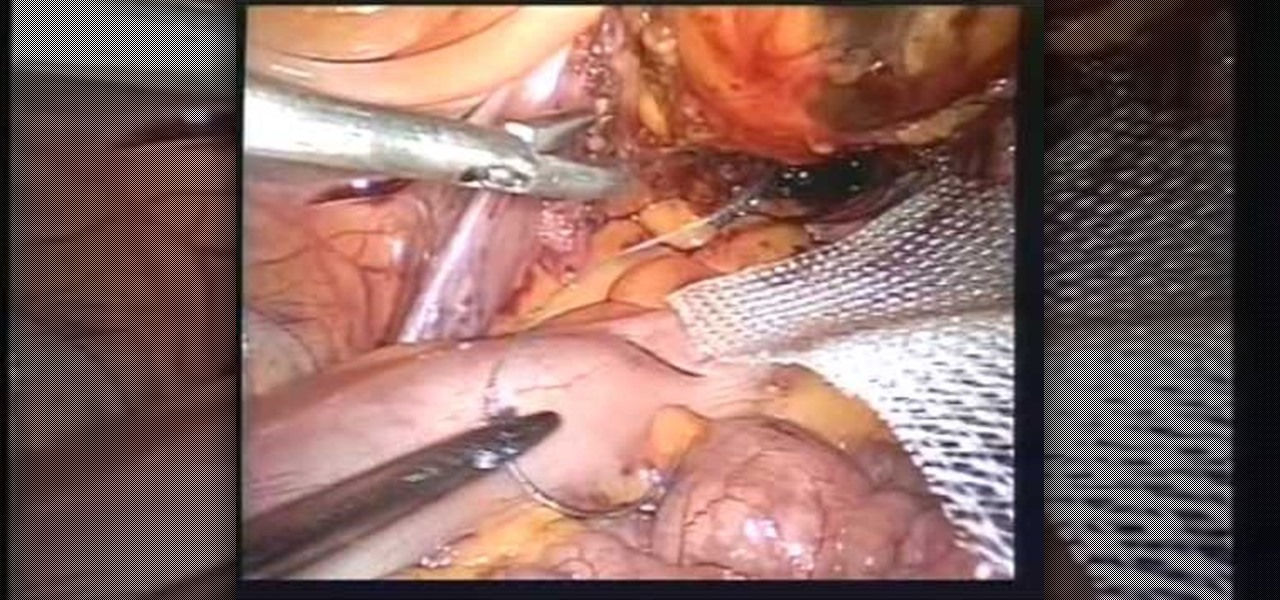
How To: Perform a laparoscopic suture in surgery
This video is about Laparoscopic Suturing Techniques.The video begins with the narrator saying that the technique is widely used in major abdominal surgeries and mastering of the techniques would give great confidence in the surgical procedures.There are various types of laproscopic needle drivers are available which can be selected according to preference.Different types of 10 millimeter laproscopic ports are available,however the valves used in the ports are important for performing extra c...

How To: Treat a bee sting
In this video, we learn how to treat a bee sting with Dr. Karen Sheehan. Wasps can sting you over and over, so make sure if you or your child is around one, you get away as quickly as possibly. A honeybee will only sting once but it will keep its stinger inside of your body, make sure you remove the as soon as possible. Another thing to do to make your child more comfortable is to give them Benadryl, and give them the appropriate dose. Also putting ice on the site for 20 minutes every hour wi...
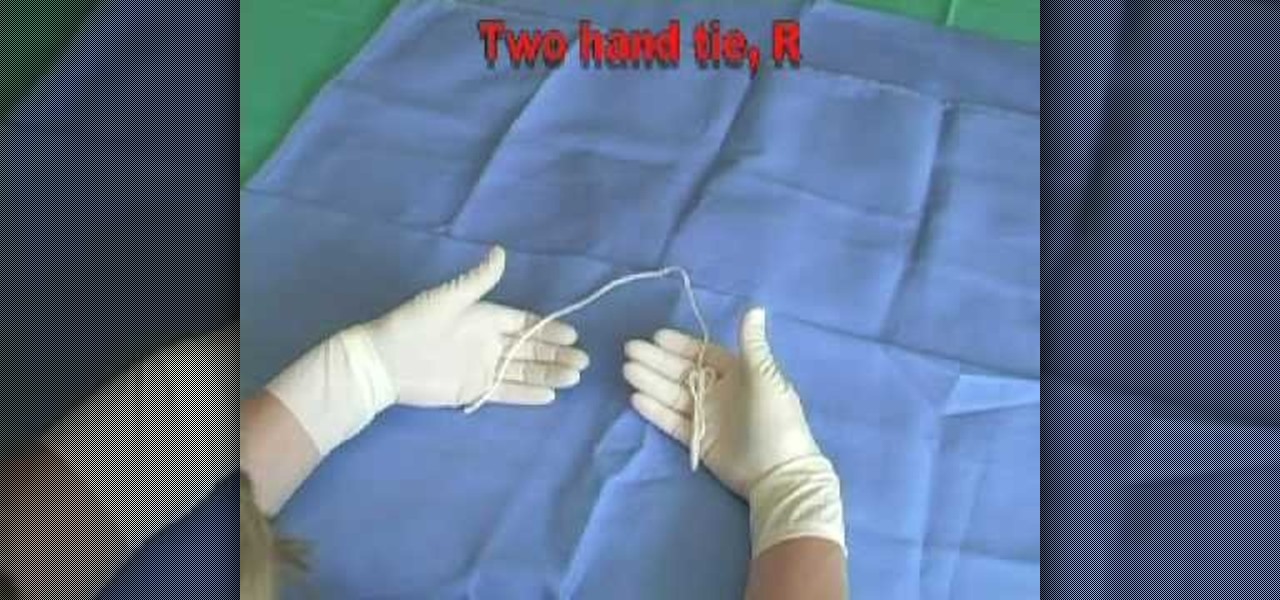
How To: Perform a two handed suture tie on an animal
luvk9ines gives a tutorial on how to tie a two-handed suture tie for veterinary purposes. To begin the two-hand suture tie, knot the two ties together and continue to knot but you will alternate the direction of each knot. One knot/tie will be interlinked from the top and the next knot will be interlinked from the bottom. In other words, pretend that you are making a knot on a tie and each time you make the knot, the tie on the left will be going in the bottom direction. The next knot, the ti...
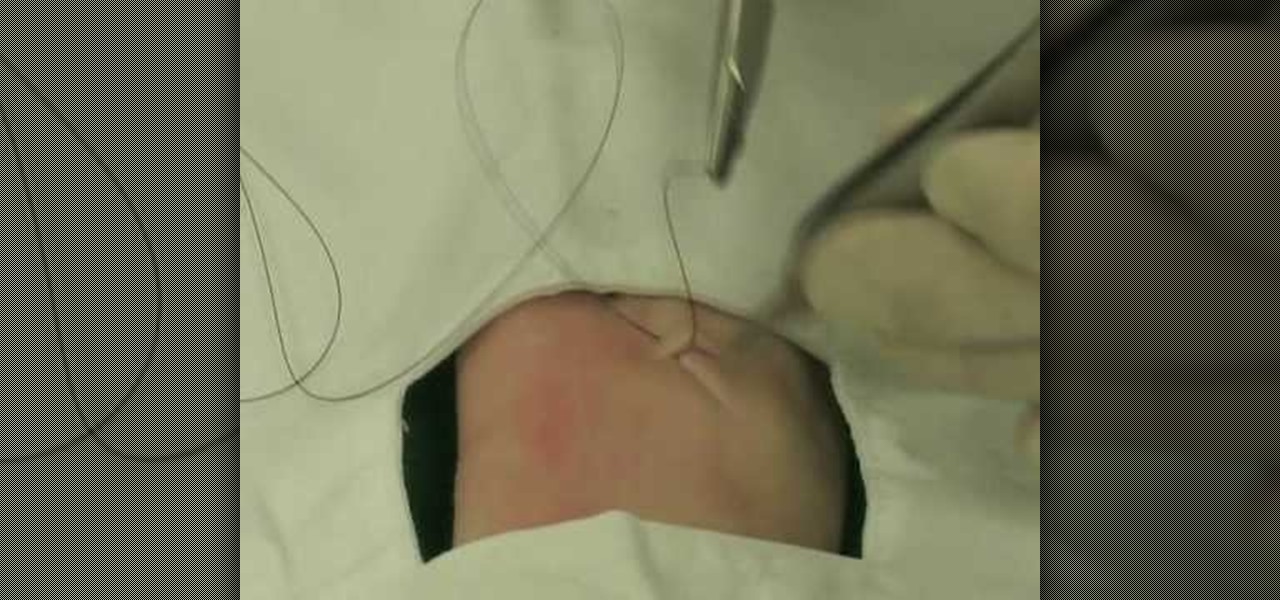
How To: Suture a wound and understand suturing techniques
Lee T. Dresang, MD of the University of Wisconsin School of Medicine and Public Health from the Deaprtment of Family Medicine give a discussion and demonstration of suturing techniques. Before beginning a procedure, you will need consent. One should irrigate lesion before beginning. A simple interrupted suture is easy to learn and fast, but unable to withstand stress. Vertical mattress sutures provide a good eversion of skin edges, closure of dead space, and strength, but also lead to scarrin...
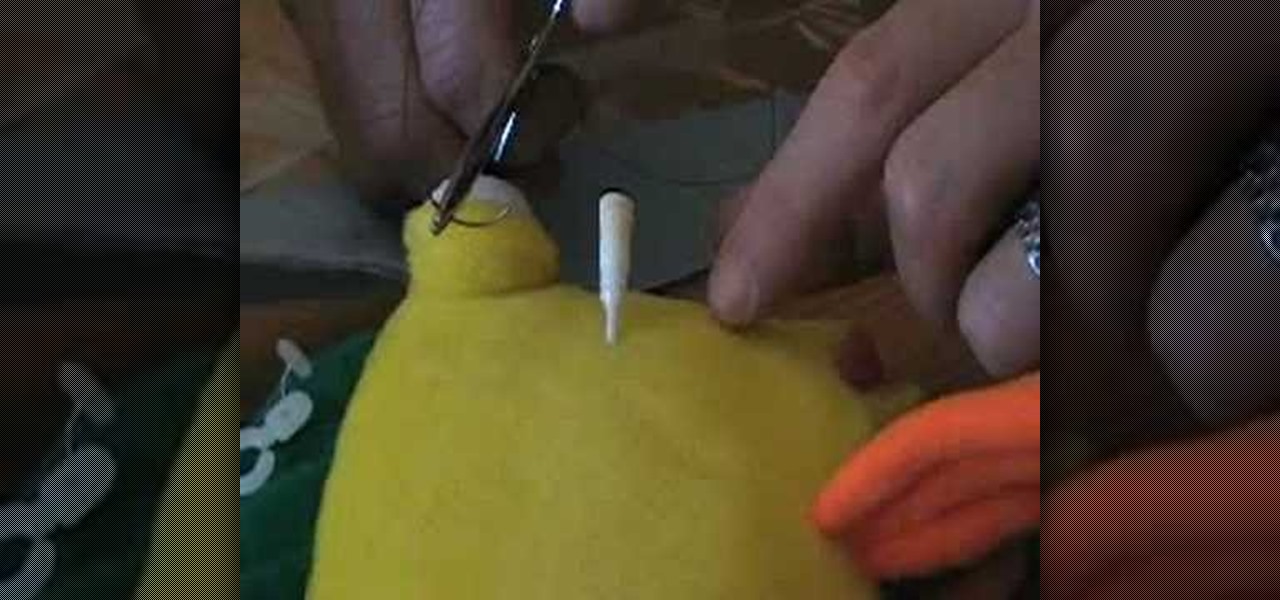
How To: Use a curved needle for suturing arterial lines
This video shows the method to suture arterial lines using a curved needle. We will use the new arterial line kit for our demonstration. We will use a curved needle as it is safer than the straight needle. Hold the suture with the hamostat at about sixty percent from the tip of the needle. Do the turn the key method to bring the needle out from the other side. Unclamp it and re-clamp it at the tip of the needle. Continue the turn the key method. Pull the suture up and through. Cut the suture ...

How To: Perform a simple interrupted suture in surgery
This video illustrate us how to preform a simple interrupted suture in surgery. Here are the following steps:
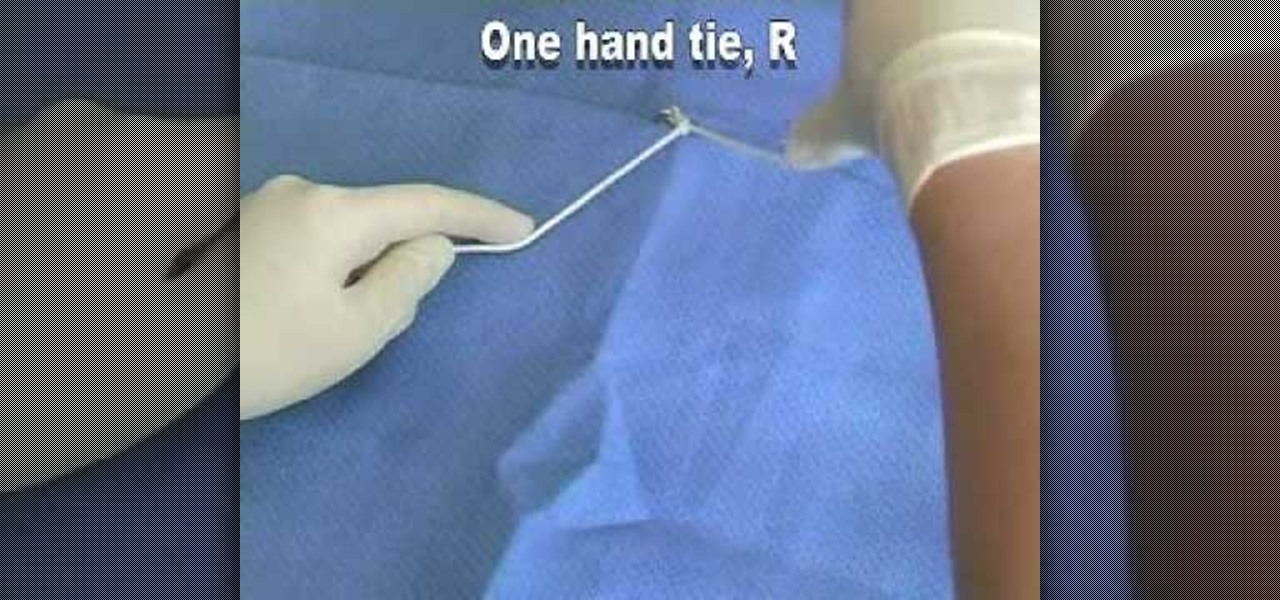
How To: Perform one handed suture ties on an animal
Gloved hands show how to perform several veterinary suture ties. This video shows the one hand tie with the right hand. It repeats the tie several times in slow motion to allow you to follow it and manage to copy the suture and learn to do the hand tie yourself.
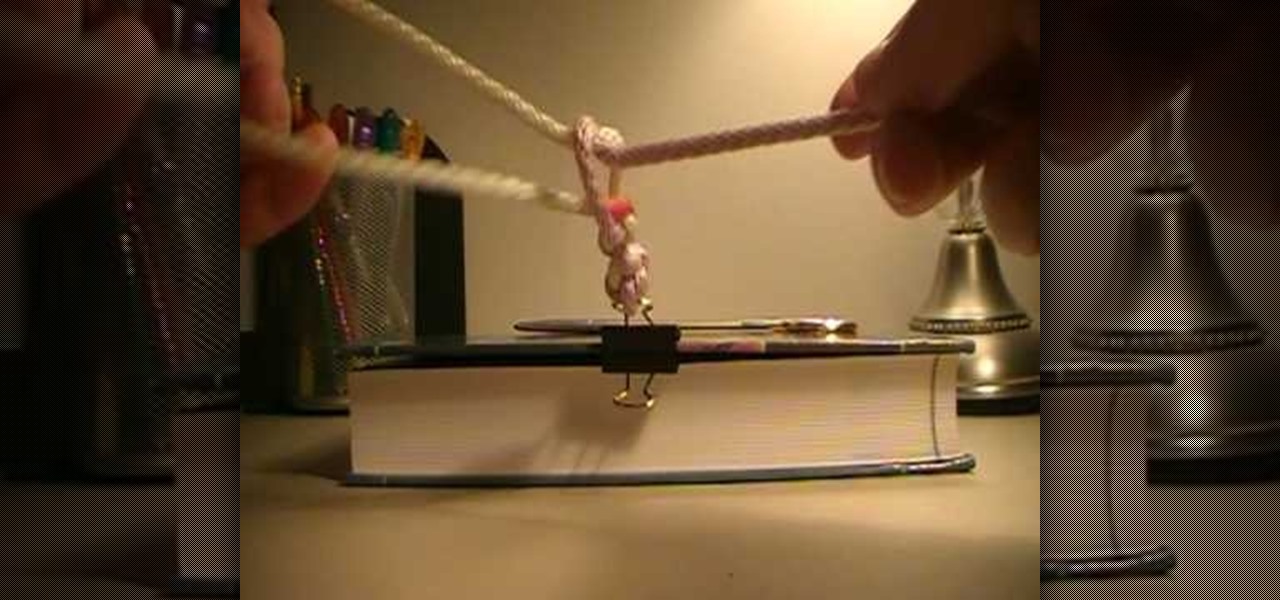
How To: Suture using a needle driver clamp
This video illustrate us how to suture using a needle driver clamp. Here are the following steps: Step 1: First of all take a clamp and fasten it on the book.

How To: Perform an interrupted and a subcuticular suture
If you want to perform an interrupted and a subcuticular suture you should first make a bite through the skin. In order to make a bite through the skin you should put the needle point perpendicular to the surface, turn your wrist and make sure it arrives at an even point from the entry point. Grasp the needle as it comes from the tissue. Make sure you always keep the needle in view. Then ti e the suture with an instrument tie and form the knot on the side of the wound so it does not effect th...
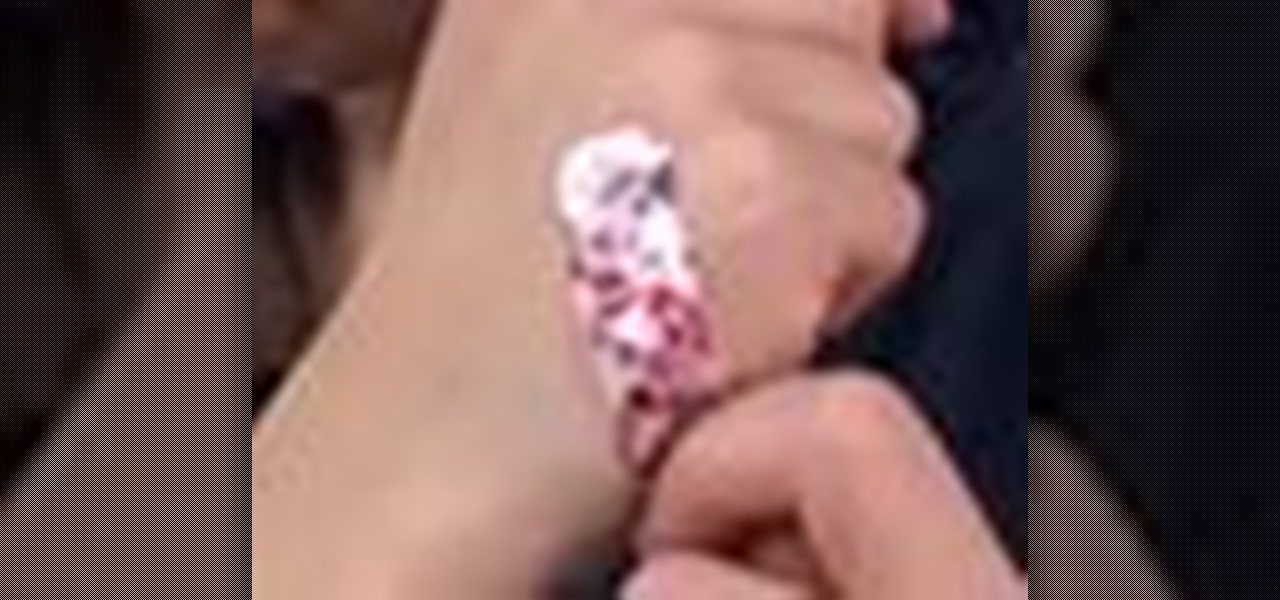
How To: Remove a band-aid without pain
The pain doesn't end when your wound heals, pulling that band-aid off can sting just as much. Watch this tutorial for a quick tip to reduce the pinch.
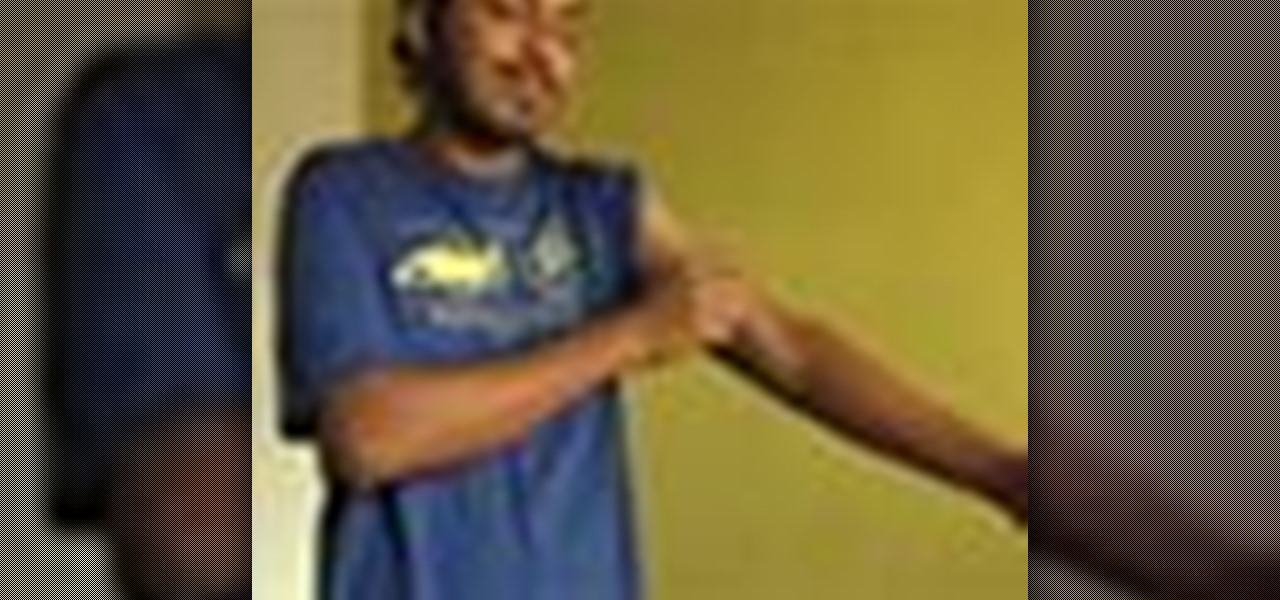
How To: Treat a mosquito bite
Don't let the fear of those red, itchy mosquito bites keep you from enjoying the outdoors this summer. Even if your mosquito repellant doesn't work and you end up getting bitten there are some easy household items that will alleviate any discomfort.
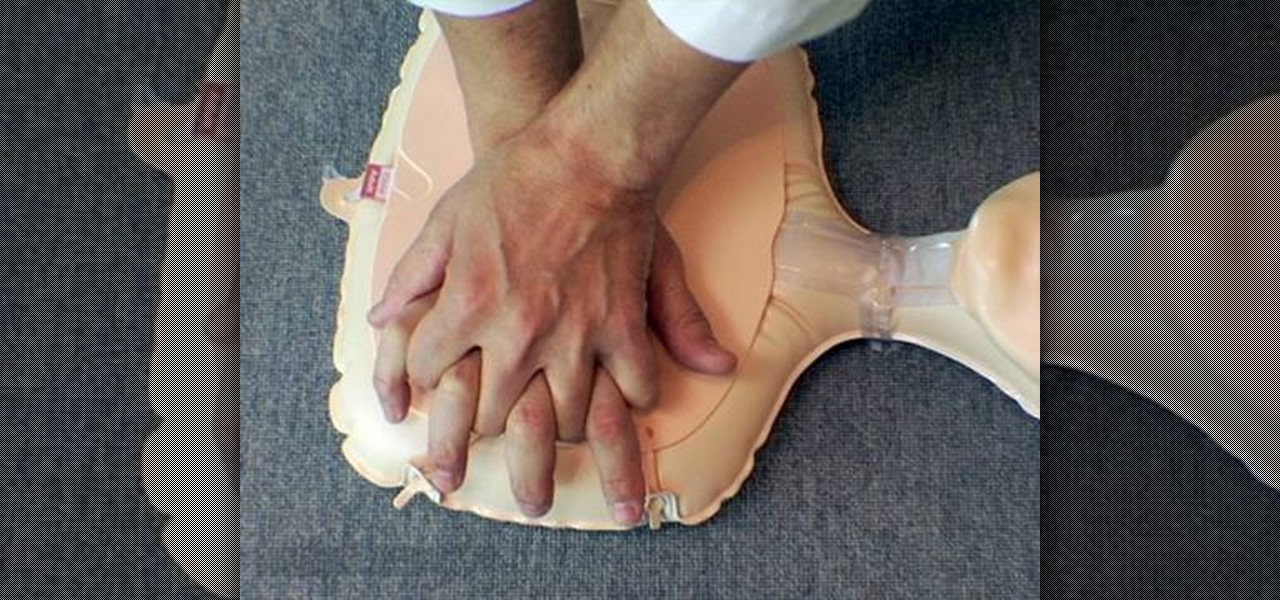
How To: Push for better CPR
Good Housekeeping Magazine has teamed with the American Heart Association to bring this life-saving video to you. In the event of a sudden cardiac arrest, call 911 and begin chest compressions immediately. Place your hands on the center of the chest and push hard and fast until help arrives. Compressions help deliver oxygenated blood to the brain and heart. This hands only approach to delivering CPR can greatly alleviate fear, and can double or quadruple a victim's chance of survival.

How To: Help Haiti
Generally, we're not much for current events-slanted issues of Wonderment, but the hottest topic in HowTo deserves far more than our humble attention.
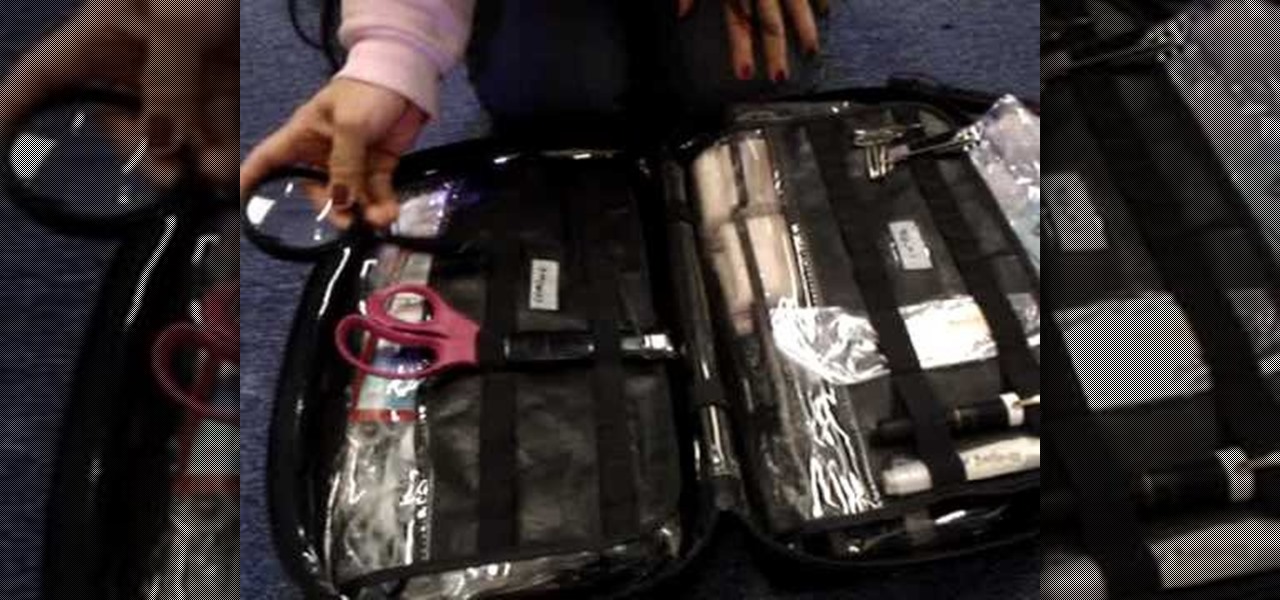
How To: Form a makeshift, provisional first aid kit
First aid is important, and not everyone is prepared or even knows what to do in an emergency situation. You could save the day, or at least mend your paper cut. THe key to first aid is the first aid kit. If your's is not up to date, or if you can't afford a real one, then watch this video to see how to form a makeshift, provisional first aid kit.
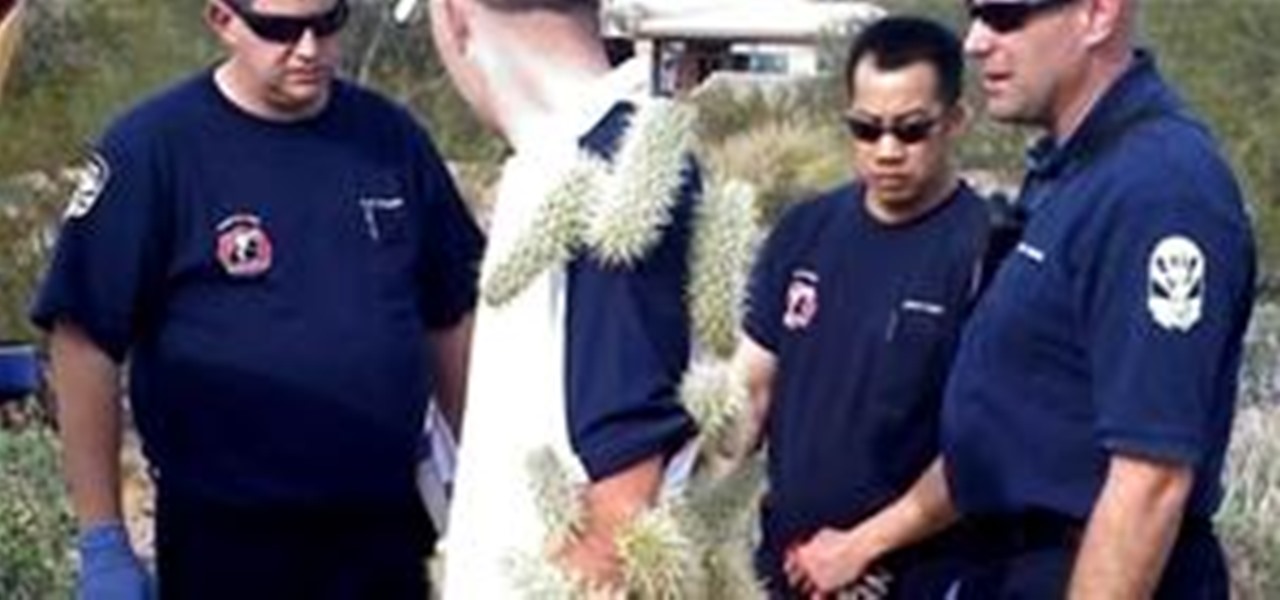
How To: I WonderHowTo Get These Excruciatingly Painful Cactus Needles Off of Me
Looks like this dude could use a little help in the first aid department. Via Bits & Pieces,
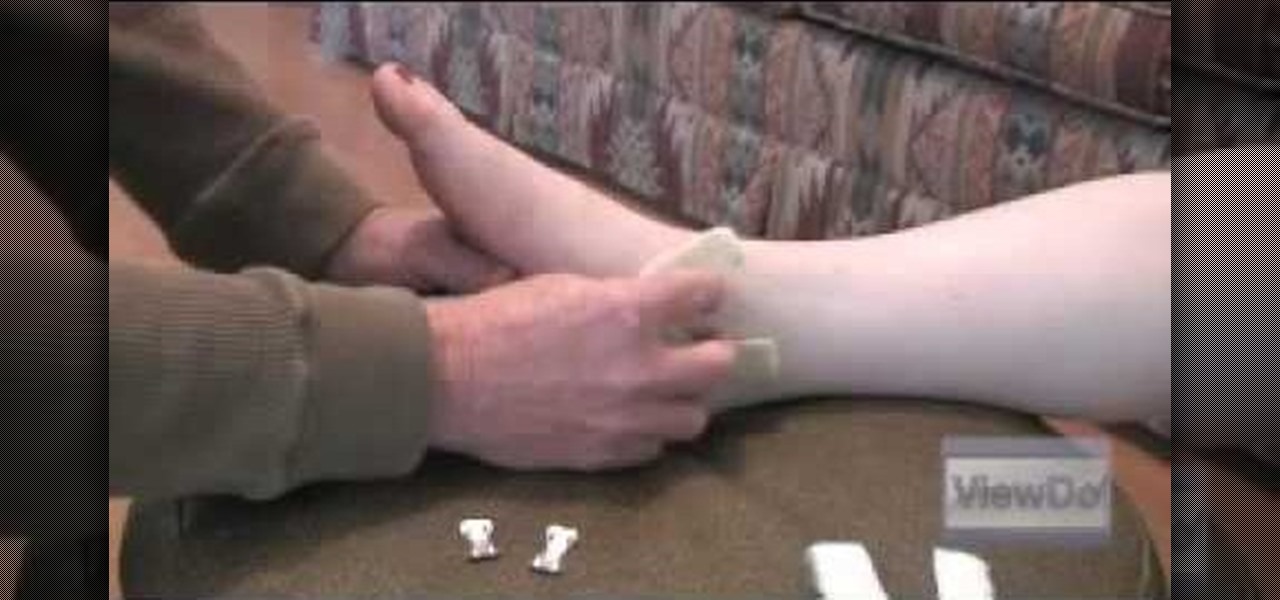
How To: Wrap a sprained ankle
Assemble the necessary equipment: a roll of 1- to 2-inch-wide athletic tape and a pair of scissors. Wrap one piece of athletic tape under the heel of the foot and bring both ends up the ankle to either side of the leg. The tape should form a "U," like the stirrup on a horse's saddle.
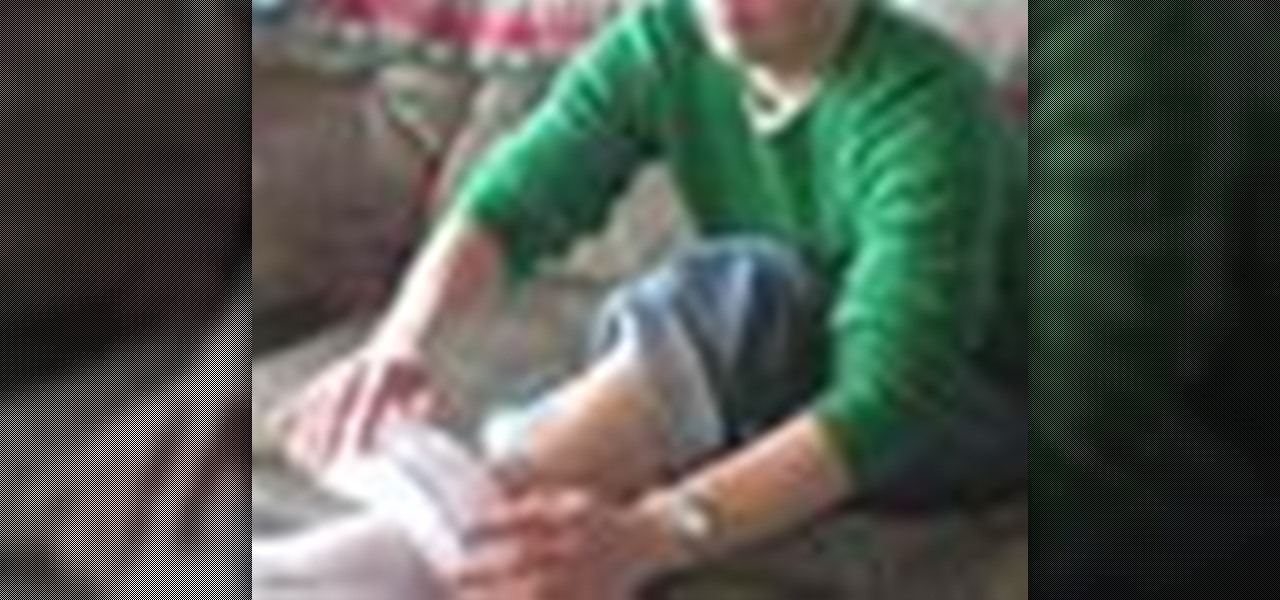
How To: Heal a sprained ankle
Looking to heal your sprained ankle and not sure what to do? Don't panic. A sprained ankle can be quite painful, as well as prevent you from getting where you need to go. You can heal more quickly with proper care.

How To: Treat burning mouth syndrome
Burning mouth syndrome is not very common, but if you get it it really, really sucks. Symptoms include an extreme, burning sensation in your mouth, including on your tongue and gums.

How To: Soothe acid indigestion or heartburn
Relieve symptoms of indigestion and hear burn with some simple remedies. You Will Need:
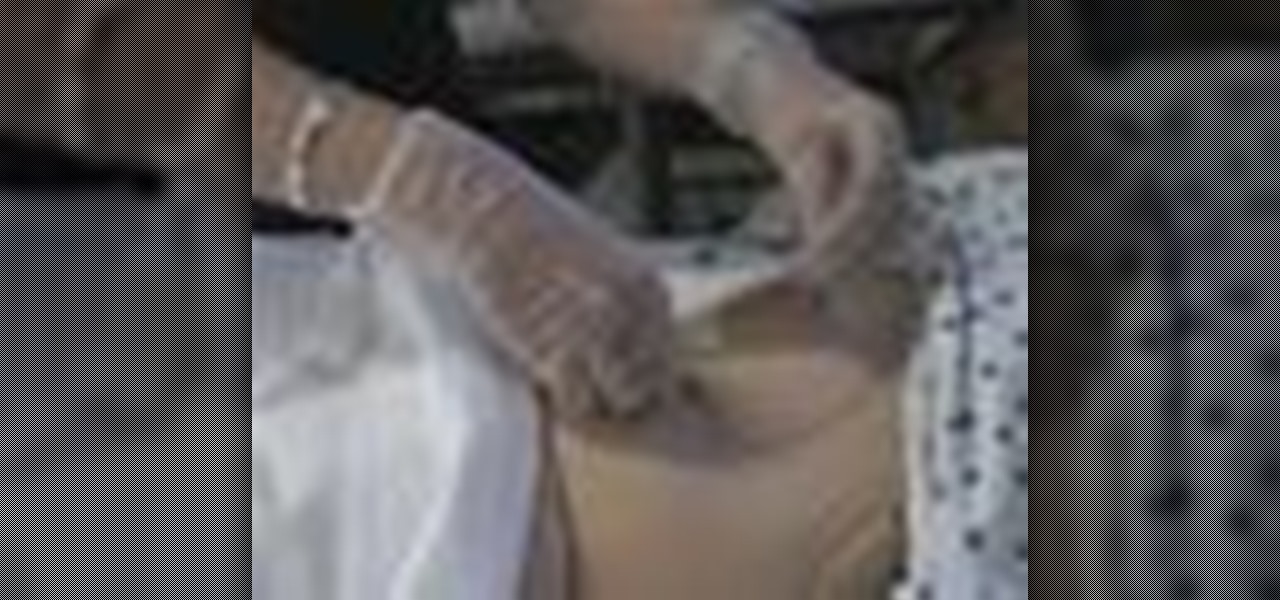
How To: Do a sterile dressing change in nursing
Going to be a nurse? Then here is one thing you should know how to do. Follow along with this nursing how-to video to learn how to do a sterile dressing change. Watch, learn and practice changing a sterile dressing during lab practice. Remember to explain procedures to patient and have all packages open before you begin. In this video the nursing student has been asked to break the sterile technique. Can you identify the breaks?



